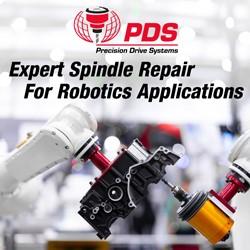GITAI Develops Inchworm-Type Robotic Arm Extending Both the Capability and Mobility of Space Robots and Completes Proof-of-Concept Demonstration (TRL 3)
In collaboration with the GITAI R1 lunar rover, the GITAI IN1 has successfully completed various tests corresponding to Level 3 of NASA's Technology Readiness Levels (TRL) in a simulated lunar environment at the JAXA Sagamihara Campus. Here we release a video of this technical demonstration.
GITAI USA Inc. (GITAI), the world's leading space robotics company, developed the GITAI IN1 (Inchworm One), a robotic arm equipped with "grapple end-effectors* " on both ends of the arm. This unique feature increases "Capability", which enables it to connect to various tools (end-effectors) to perform multiple tasks for various applications, and "Mobility", which enables it to move in any direction. It can also connect/disconnect itself among different vehicles, such as rovers, landers, satellites, etc. In collaboration with the GITAI R1 lunar rover, the GITAI IN1 has successfully completed various tests corresponding to Level 3 of NASA's Technology Readiness Levels (TRL) in a simulated lunar environment at the JAXA Sagamihara Campus. Here we release a video of this technical demonstration.
As the demand for development/construction tasks in space are increasing, the requirements for robots in space are becoming diverse and complex. GITAI has responded to these needs by developing the GITAI IN1, an inchworm-type robotic arm equipped with "grapple end-effectors" on both ends of the arm. It enhances the performance of two different types of features: "Capability", to perform multiple tasks, and "Mobility", to perform a wide range of tasks.
This ground demonstration test emulates tasks that will be required for future lunar explorations and lunar base constructions using two robots: GITAI IN1, an inchworm-type robotic arm, and GITAI R1, a lunar rover. The following two sets of tests were conducted in the simulated lunar environment at JAXA Sagamihara Campus, and all tests were completed successfully.
"Mobility" performance verification test
The GITAI IN1 robotic arm moved itself autonomously from the lunar lander to the GITAI R1 rover, moved to the worksite carried by R1, performed the various tasks, and returned to the lunar lander to verify its "Mobility" performance.
"Capability" performance verification test
Assuming lunar resource extraction operations, we verified "Capability" to conduct a series of tasks such as breaking down resource samples using cutting tools, recovering resource samples using shovels, and transporting resource samples using a tow vehicle, all while switching between multiple end-effectors.
* Grapple end-effector / grapple fixture: GITAI's proprietary interface that enables the end of the robotic arm to be interchangeable. Not only does it improve task performance by connecting to various tools (end-effectors) to perform multiple tasks, but it also enables autonomous movement of the arm itself when equipped at both ends of the arm. When mated with a grapple fixture, the grapple end-effector provides mechanical coupling, power coupling, and communication coupling functions to enable operation of end-effector tools and other devices.
About GITAI
GITAI is the world's leading space robotics company that aims to provide a safe and affordable means of labor in space and reduce operational costs by up to 100 times. GITAI is developing highly capable, safe, and reliable robots to help build and maintain satellites, space stations, lunar bases, and even cities on Mars.
Featured Product

